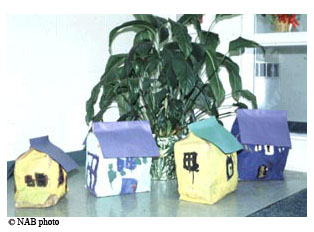Human Commonalities Definition:
Basic experiences, needs and aspirations that are integral parts of life and art occuring cross-culturally are included in this category. These human commonalities are frequently motivation and context for artistic activity as well as content of artwork. These topics provide rich universal themes for art endeavors and curriculum planning.
Related Concepts:
 Basic Needs: Basic human needs include the need for food, water, shelter, security and a sense of place. The need for love is also basic among all people.The urge to create, enjoy beauty and embellish is also shared.
Basic Needs: Basic human needs include the need for food, water, shelter, security and a sense of place. The need for love is also basic among all people.The urge to create, enjoy beauty and embellish is also shared.
Environmental Concerns: Environmental considerations, interactions and concerns reflect varied human relationships with the natural world. Art can foster appreciation for nature and express concern for living synchronistically with, preserving or restoring the natural world.
Birth, Life and Death: Each person across time experiences birth, life and death. These stages of existence are reflected in the art and artifacts of the world. Related cross-cultural themes could include celebrating birth, general life activities like work and play, and confronting or coping with death.
Dreams, Hopes and Visions: The urge to dream, hope and imagine in life is a powerful, sustaining, uplifting propensity of humans. Cultures as well as individuals uses dreams and inner vision as resources for imaginative artwork, creative problem solving and interpreting life experience.
Interpersonal Relationships: Interpersonal relationships, both harmonious and challenging, are depicted throughout the history of art. Individuals communicate about relationships through art both directly and indirectly through such themes as parenthood, friendship, falling in love, animosity and peacemaking.
Human Commonalities
